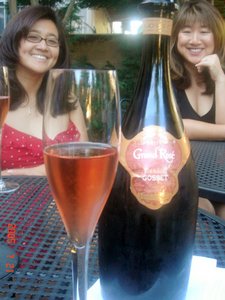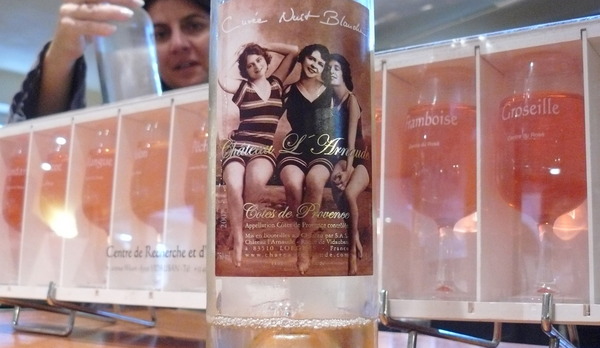

Blended or straight? Can you tell which is which?
What's in a name? What's in a color? What's in a rosé?
A rose is a rose is a rose, to be sure, but in parts of France, a rosé is something quite specific: a red wine that's been aborted. That is, it starts out being red, a fully formed fetus of a red wine, but its growth is artificially stunted before it reaches red-hood. It is bled, not to death but to life.
Confusing, yes?
Traditional French rosé is produced by the saignée method. Red grapes are crushed, their skins macerating in the not-yet-fermented must for a short period (usually less than a day) until the juice takes on a pink hue. The tinted juice is then drawn off (bled); it continues its life as a rosé. What's left in the tank becomes a more intense red wine.
That's how most of the French do it. In other parts of the world, notably the southern hemisphere, rosé is produced by blending red and white wines. And the European Union, recognizing the competition, is about to authorize the sale of such mixes, much to the consternation of traditional French wine growers. Sacrilege, they say! An outrage, they say! Artificial wine, they say! A threat to the integrity of our cherished way of life, say the increasingly feisty French.
What the Rhone and Provence rosé people don't realize, perhaps, is that the most famous French wine of all, champagne, is produced by blending grapes, and the highly prized pink champagne is almost invariably made by adding red wine to bubbly white. It's how we see the world: through rose-colored glasses.

Leave a comment